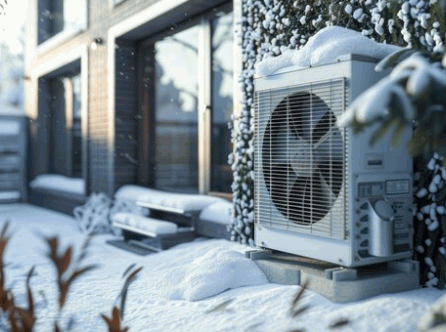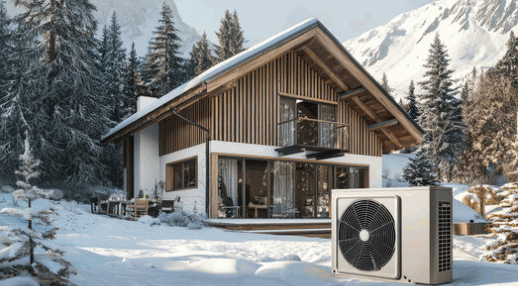As winter approaches, it is essential for homeowners to identify effective and efficient heating solutions, particularly in cold climates like Minnesota. One promising technology in this regard is the air source heat pump, which leverages ambient air to provide warmth during the colder months. This system operates in winter by employing both outdoor and indoor units, presenting various benefits, types, efficiency considerations, and maintenance recommendations, making it a cost-effective solution for residential energy needs. Gaining a comprehensive understanding of this heating option may result in significant cost savings and an enhanced level of comfort within the home environment.
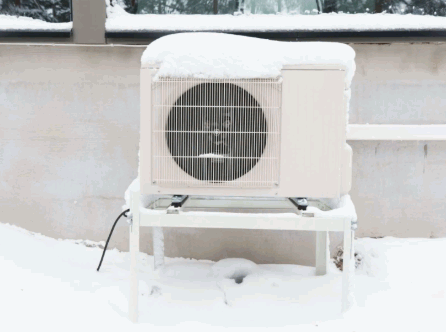
What Is An Air Source Heat Pump?
An air source heat pump (ASHP) is an energy-efficient heating system that extracts heat from outdoor air, even in cold climates such as Minnesota, to provide both heating and cooling for residential spaces.
This versatile system operates by utilizing a variable-speed compressor that adjusts heating performance based on heat demand and outdoor temperature, which makes it a preferred option among contractors in colder regions.
ASHPs present a sustainable alternative to traditional fossil fuel heating methods, thereby contributing to the transition toward renewable energy and assisting homeowners in reducing their energy expenses.
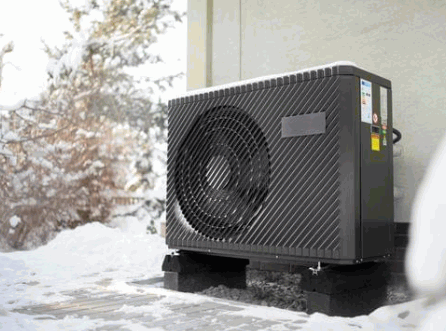
How Does An Air Source Heat Pump Work In Winter, Especially in Cold Places?
During the winter months, an air source heat pump (ASHP) effectively extracts heat from the outdoor air to provide heating, even in colder climates where outdoor temperatures may decrease significantly. This system operates on the principle that even cold air retains some heat, which is drawn into the heat pump and converted into warm air for indoor use, demonstrating remarkable cold-weather performance.
However, as temperatures decline, there may be a reduction in efficiency, requiring supplementary heat sources, such as electric resistance or natural gas, to ensure optimal heating capacity and maintain comfort levels within residential spaces.
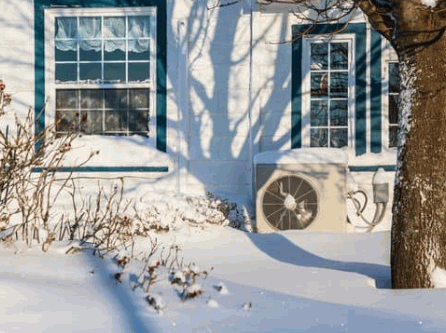
What Is The Role Of The Outdoor Unit?
The outdoor unit of an air source heat pump is essential for heat extraction, as it operates by absorbing heat from the surrounding air to enhance heating performance indoors.
This unit consists of several critical components that work collaboratively to optimize functionality. Heat exchangers are integral to transferring thermal energy, while fans facilitate efficient air circulation. The design and placement of the outdoor unit are not arbitrary; they considerably influence overall efficiency, particularly across varying climates. For example, an optimal location can improve airflow and mitigate the effects of adverse weather conditions.
To ensure operational excellence, regular maintenance is critical. Key maintenance practices include:
- Conducting routine checks on heat exchangers for debris accumulation
- Ensuring that fans are functioning without obstruction
- Inspecting refrigerant levels and overall system integrity
These practices are vital for maintaining the peak performance of the heat pump, ultimately extending its lifespan and reliability, thereby reducing energy bills and enhancing the comfort level of residents.
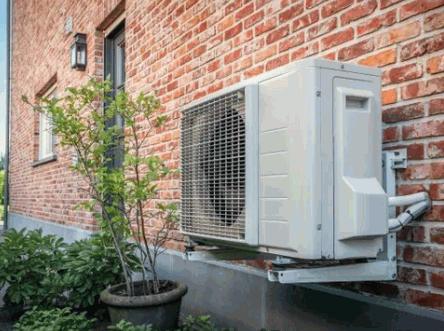
What Is The Role Of The Indoor Unit?
The indoor unit of an air source heat pump is essential for distributing heated air throughout the home, playing a crucial role in maintaining resident comfort and ensuring a balanced and inviting environment that enhances overall quality of life.
The design of the indoor unit is of paramount importance, as it influences both aesthetic appeal and operational efficiency. Factors such as placement options—whether mounted high on a wall or installed in the ceiling—are critical since they impact the effective circulation of warm air throughout various rooms. Strategically placed units can enhance heating distribution efficiency, thereby preventing the occurrence of hot or cold spots that may arise from less optimal placement.
The integration of smart thermostats enables residents to customize their environment with greater precision, allowing for the creation of schedules or the adjustment of settings remotely. These devices not only enhance indoor comfort but also significantly contribute to improved energy efficiency by ensuring that the system operates only when necessary.
Maintaining a balance between the indoor unit and its corresponding outdoor unit is vital for seamless operation, maximizing energy savings while achieving the desired temperature. When both units function in harmony, they contribute to a reliable and sustainable heating solution, supporting the broader energy transition towards electrification.
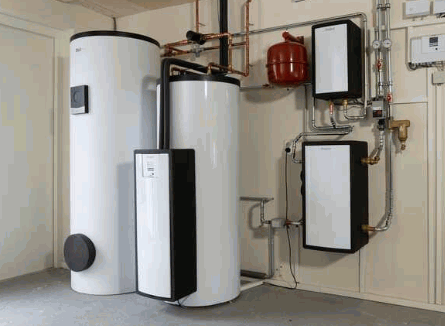
What Are The Benefits Of Using An Air Source Heat Pump in Winter for Home Heating?
Utilizing an air-source heat pump during the winter months presents various advantages, including substantial cost savings on heating expenses. These systems are engineered for energy efficiency, thereby reducing dependence on conventional heating fuels such as natural gas and heating oil. By employing a hybrid system that integrates renewable energy sources like solar and wind energy with traditional systems, homeowners can achieve optimal heating performance even in cold climates.
Homeowners can benefit from an environmentally sustainable heating solution that contributes to climate change mitigation by lowering carbon emissions. Furthermore, air-source heat pumps provide both heating and cooling capabilities throughout the year, rendering them a versatile option for optimizing comfort in all seasons. The installation process can be facilitated through financial incentives and federal incentives, encouraging energy-efficient upgrades.
Cost Savings On Heating Bills
One of the primary advantages of an air source heat pump is the considerable cost savings on heating expenses, which can be attributed to its high-efficiency ratings when compared to conventional heating systems, particularly in regions like North America where electricity costs may vary.
In colder climates such as Minnesota, where winter temperatures frequently fall below freezing, the financial benefits become even more significant. On average, homeowners can save up to 50% on their heating costs by choosing an air-source heat pump instead of traditional methods like natural gas or electric resistance heating. For example, while the average annual heating bill for a Minnesota household using natural gas may reach approximately £900, those who invest in an air source heat pump could see their bills reduced to around £500 annually.
- Efficiency: Air source heat pumps can achieve efficiency ratings ranging from 300% to 400%, indicating that for every unit of energy consumed, they can provide three to four units of heat.
- Reduced Carbon Footprint: By utilizing renewable heat sources, air source heat pumps significantly reduce greenhouse gas emissions.
- Rebates and Incentives: Many states and utilities provide rebates for air source heat pump installations, further decreasing upfront costs.
Given these considerations, it is evident that transitioning to an air-source heat pump not only facilitates substantial savings but also encourages a more sustainable approach to residential heating.
Environmentally Friendly
Air source heat pumps are recognized as environmentally friendly heating solutions, as they harness renewable energy from the air to generate heat, thereby contributing to the mitigation of climate change.
These systems operate by transferring thermal energy from the external atmosphere into buildings, significantly reducing the reliance on traditional heating methods that typically depend on fossil fuels. By adopting these technologies, households can substantially decrease their carbon emissions, which has a significant impact on overall greenhouse gas levels.
Moreover, as these pumps consume considerably less energy, they align with broader renewable energy objectives and initiatives, particularly in regions such as Minnesota.
The advantages of air-source heat pumps include:
- Promoting energy independence
- Mitigating local air pollution
- Enhancing energy efficiency
These benefits not only contribute to a healthier environment but also promote a sustainable approach in the ongoing effort to combat climate change.
Year-round Heating And Cooling
The air source heat pump offers a significant advantage in its ability to provide year-round heating and cooling, rendering it an optimal solution for residential energy requirements throughout both summer and winter, thus addressing varying heat demands effectively.
This dual functionality enables homeowners to maintain a comfortable indoor environment regardless of the season. In warmer months, the air source heat pump operates efficiently to sustain pleasant indoor temperatures by transferring heat from the interior to the exterior, thereby effectively cooling the living space. This operational process contrasts markedly with traditional air conditioning systems, which primarily focus on cooling, often leading to increased energy consumption and associated costs. Additionally, the use of variable-speed compressors enhances efficiency and reduces the likelihood of efficiency drops in low-temperature conditions.
Key advantages of air-source heat pumps include:
- Energy efficiency, which can result in substantial savings on utility bills.
- The use of the same equipment for both heating and cooling, thereby negating the necessity for separate systems and reducing maintenance requirements.
In summary, the seamless transition between heating and cooling provided by air-source heat pumps not only enhances year-round comfort but also contributes to greater environmental sustainability by harnessing renewable energy sources.
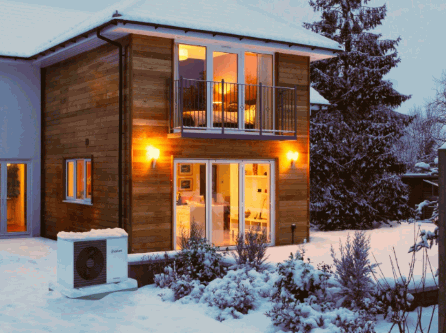
What Are The Different Types Of Air Source Heat Pumps?
There are various types of air-source heat pumps available in the market. These include:
- Air-to-air heat pumps, which facilitate the transfer of heat between outdoor air and indoor air;
- Air-to-water heat pumps, which distribute heat through water-based systems;
- Hybrid heat pumps, which combine traditional heating methods with renewable energy sources.
Air-to-Air Heat Pumps
Air-to-air heat pumps represent a prevalent category of air-source heat pumps that transfer heat directly from the outdoor air to interior spaces. These systems effectively distribute warmth through either ducted or ductless configurations, making them an increasingly popular choice for homeowners seeking energy-efficient climate control solutions in regions like Minnesota and Alaska.
The operation of these systems involves absorbing ambient heat from the outside air and releasing it indoors; conversely, they can extract heat from the indoor environment to provide cooling, thereby offering a versatile option for year-round comfort.
In residential applications, air-to-air heat pumps fulfill a dual role, efficiently heating spaces during colder months and cooling them during warmer periods, showcasing their adaptability. An examination of their applications across varying climates reveals that their performance can differ significantly; while they perform exceptionally well in moderate climates, they may necessitate supplementary heating in extremely cold regions like Fairbanks, Juneau, and Kotzebue.
Advantages of Air-to-Air Heat Pumps:
- Energy efficiency, resulting in lower utility bills.
- A reduced carbon footprint compared to traditional heating systems.
- Space-saving designs that accommodate various home layouts.
Recent advancements in technology have further enhanced the functionality of air-to-air heat pumps, enabling them to operate effectively even at lower temperatures, thus improving their reliability and overall performance. These advancements often include the use of performance maps to optimize operations.
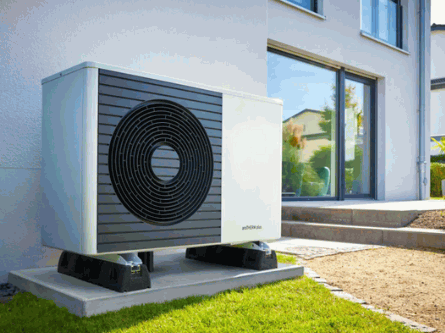
Air-to-Water Heat Pumps
Air-to-water heat pumps harness outdoor air to heat water, which can subsequently be utilized in hydronic heating systems for both residential and commercial applications. These advanced systems extract heat from the surrounding environment, even in cooler temperatures, and transfer that energy to water for space heating or domestic hot water needs. Their efficiency positions them as a favorable alternative to conventional heating methods, particularly in light of escalating energy costs and the increasing emphasis on sustainable solutions.
A significant advantage of air-to-water heat pumps is their capacity to maintain effectiveness in cold climates. Unlike traditional systems, which may experience challenges in lower temperatures, these pumps are engineered to continue extracting heat even as external temperatures decline, thereby ensuring a dependable source of warmth throughout the winter months, particularly in cold regions of North America.
Key benefits of air-to-water heat pumps include:
- Environmental benefits: They substantially reduce greenhouse gas emissions in comparison to oil and gas heating methods.
- Cost-effectiveness: Users can realize long-term savings on energy bills due to their high efficiency.
- Versatile applications: These systems are suitable for both residential and commercial buildings and can seamlessly integrate into existing heating frameworks.
In summary, when evaluating air-to-water heat pumps against traditional water heating methods, it is evident that these pumps offer a sustainable and economically viable alternative that aligns with contemporary energy efficiency objectives.
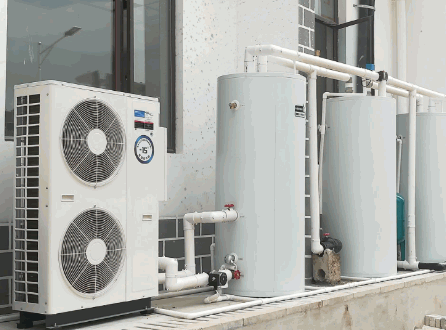
Hybrid Heat Pumps
Hybrid heat pumps represent a sophisticated integration of air-source heat pump technology and traditional heating systems, such as natural gas or electric resistance. This combination enhances efficiency and reliability across a range of climatic conditions, making hybrid systems a viable option for diverse environments.
These advanced systems function by extracting heat from the air during milder months, while seamlessly transitioning to conventional heating methods as temperatures fall significantly. This adaptability enables homeowners to maintain a consistent and comfortable indoor environment throughout the year.
The energy efficiency offered by hybrid heat pumps frequently surpasses that of traditional systems, leading to substantial reductions in utility bills and carbon footprints. Their appeal lies in their capability to facilitate the energy transition, achieving a balance between renewable energy sources and conventional heating methods. This makes them a compelling choice for environmentally-conscious homeowners, especially those looking to integrate solar energy or hydropower into their energy strategy.
Key benefits include:
- Improved energy savings
- Reduced greenhouse gas emissions
- Versatility for diverse climatic conditions
The integration of hybrid heat pumps is a pivotal advancement in promoting sustainable living while effectively addressing residential heating demands.
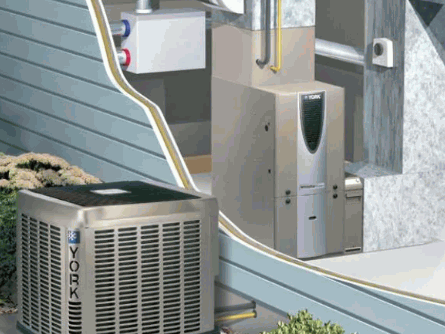
What Are The Factors That Affect The Efficiency Of An Air Source Heat Pump In Winter?
Numerous factors can significantly impact the efficiency of an air source heat pump during the winter months. These factors include the outdoor temperature, the quality of insulation within the home, insulation upgrades, as well as the size and placement of the heat pump itself.
Temperature
Outdoor temperature significantly influences the performance of an air source heat pump, with efficiency potentially declining markedly in extremely cold conditions.
Understanding this relationship is essential for homeowners who rely on these systems for effective heating during colder months. Heat pumps function by extracting warmth from the outdoor air and transferring it indoors; however, their capacity to perform this function diminishes as temperatures decrease. As temperatures approach freezing or drop below, the system must exert greater effort to maintain comfortable indoor conditions.
This adaptation occurs through several mechanisms, including:
- Defrost cycles to eliminate ice accumulation on the outdoor unit.
- Increased energy consumption to achieve the desired thermostat settings.
- Possible reliance on supplementary heating sources to optimize performance.
These adaptations are crucial not only for maintaining comfort but also for ensuring energy efficiency, as extended operation at reduced efficiency can result in elevated utility costs.
Insulation
Proper insulation within a home is imperative for maximizing the efficiency of an air source heat pump. It minimizes energy consumption and heat loss, resulting in a more comfortable living environment and reduced utility expenses.
A well-insulated residence can significantly enhance the overall performance of heating systems, ensuring that the warmth generated by the pump is effectively retained within the living space, rather than escaping through inadequately insulated areas. Upgrading insulation not only fosters a more consistent indoor temperature but also contributes to sustainability by reducing energy demand.
- Fiberglass is a widely used material due to its cost-effectiveness and ease of installation.
- Foam board offers superior insulation value, particularly in confined spaces.
- Cellulose, composed of recycled paper, serves as an environmentally friendly option that provides excellent thermal performance.
Homeowners can employ various techniques to enhance insulation, such as installing weather stripping around doors and windows, utilizing insulated curtains, or conducting an energy audit to identify areas of heat loss. These strategies not only improve energy efficiency but also lead to a more comfortable living environment, potentially covered by policy changes to encourage energy efficiency.
Size And Placement Of The Heat Pump
The size and placement of an air source heat pump significantly impact its efficiency rating, as units that are improperly sized can result in decreased performance and increased energy expenditures. It is advisable to consult a contractor network to ensure proper installation.
Selecting the appropriate size based on the specific specifications of the home is vital for achieving optimal heating performance. An incorrectly sized unit may find it challenging to maintain the desired temperatures, leading to unnecessary wear and tear over time.
- Airflow and efficiency are directly influenced by the placement of the heat pump, which requires unobstructed access to outdoor air. Therefore, it is essential to install the unit away from obstructions such as walls, fences, or dense vegetation.
- Proper installation must also take into account the configurations of the ductwork; poorly insulated or improperly sealed ducts can lead to heated air leakage, which can drastically diminish efficiency.
- It is advisable to consult certified HVAC technicians for both sizing and placement to ensure the system operates at its peak performance.
Ultimately, careful consideration of the size and position of the heat pump can significantly enhance comfort levels within the home while helping to maintain manageable energy costs. Consultations with experts such as those at the Center for Energy and Environment in Minneapolis or with professionals can be beneficial.
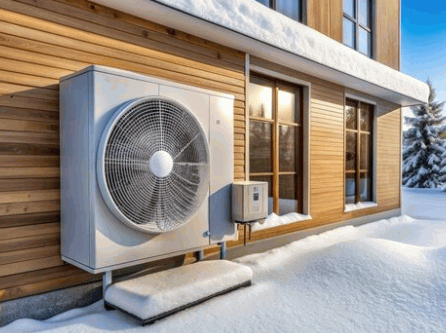
How To Properly Maintain An Air Source Heat Pump For Optimal Performance In Winter?
The proper maintenance of an air source heat pump is essential for ensuring optimal performance during the winter season. This involves conducting regular inspections and servicing by qualified contractors to maintain the system’s efficiency.
Look into: How To Clean Air Source Heat Pump
